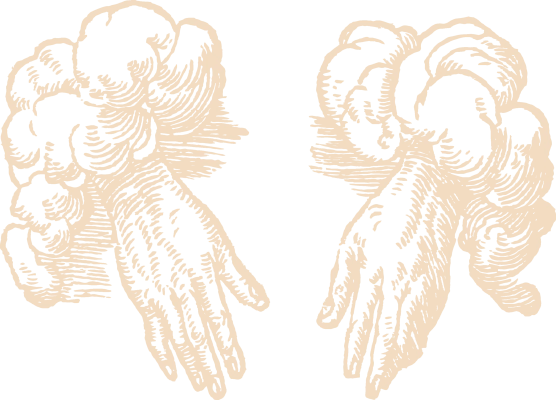
Worldbuilding pt. 07: planes
In the first part of my worldbuilding series, I said that I was going to take the top-down approach, i.e., start from the birth of the universe and zoom in later. Following last month’s post about magic, I once again decided to go bottom-up and talk about the planes of my universe.
Heaven and Hell
Currently, Unaria only has three planes of existence: the Material Plane (Unaria itself), the Feywild, and the Shadowfell. Now that we know everything there is to know about cosmology, the gods, and magic, we can start working on the rest of the planes. Specifically, I want to explain the outer planes.
I wan’t going to write a whole post about this topic, but one of my players made up his mind about his next character and turns out he wants to make an Illrigger that serves a devil from the Nine Hells. Well… Now Unaria needs something like the Nine Hells.
The main inspiration for the planes of Unaria will be the outer planes of D&D. Nothing from esoteric philosophy this time! My only goal here is to rework them as places where souls go in the afterlife, because this might be important for my player’s backstory.
Making it mine
In my setting, once something is infinite, space can’t handle it anymore. An infinite being, like the gods, can’t exist in any material form and, therefore, collapses unto itself like a black hole curving space-time beyond the reaches of physics. This creates a new plane.
I’ve said before that “The weavers are eight and, intertwining themselves with the threads, they make the mortal realm.” Now you know that this is literally true: the gods are, in every sense of the word, Unaria.1
Besides being a god, there is another way to become infinite: to be remembered forever. This is a fate reserved for very few mortals and defies the concept of time itself, but it can happen in Unaria. Great tyrants, true liches, master poets, powerful wizards… Those who become larger than life, those who perform deeds that will be in the annals of history forever, become planes of existence. These mortals are collectively referred to as Patrons2.
Much like the eight gods, who together became the Prime Material Plane, Patrons don’t each become a different outer plane; they join one of 16 different planes depending on what they did to be remembered forever. These planes mirror the domains of the gods, demonstrating how central the concepts are to the universe:
| Domain of… | Name (in D&D) | Example |
|---|---|---|
| Creation | Elysium | Create a wonder of the world |
| Destruction | Abyss | Destroy the legacy of a civilization |
| Harmony | Arcadia | Prevent a major war from happening |
| Discord | Acheron | Wage a war of continental proportions |
| Truth | Mount Celestia | Become the mouthpiece of a god |
| Lies | Pandemonium | Become a false prophet |
| Justice | Mechanus | Bring a powerful tyrant to justice |
| Tyranny | Gehenna | Create an empire |
| Life | Beastlands | Heal countless wounds |
| Death | Hades | Become a true lich |
| Love | Bytopia | Tell a tale for the ages |
| Greed | Nine Hells | Sell your soul to a fiend |
| Virtue | Ysgard | Fight for those who can’t |
| Weakness | Carceri | Usurp another Patron |
| Magic | Arborea | Create a new spell |
| Mundanity | Limbo | Prevent society from advancing |
Once a person passes away, their soul goes on to one of these planes and stays there while they are still remembered. Rituals of memory (where a loved one is remembered and their name is repeated over and over) strive to keep someone’s soul “alive” for longer. If they are in the Domain of Love, for example, that loved one will enjoy more time in absolute bliss before fading into oblivion. However, if they are in the Domain of Death, the rest of their existence in the afterlife will be absolute pain.
Undeath in general is an attempt by mortals to cheat the system and become infinite by brute force. Regular liches are a great example: naive wizards think that achieving eternal life is enough to ascend as a Patron, but the necessity of a philactery is an obvious flaw in the plan. Only a true lich can ascend, but then it (by definition) can’t have a physical form anymore.
In some places, Patrons are even venerated like saints. In this case, they might be referred to as Saints, Heroes, Prophets, etc. Some cultures of Unaria also claim that each Patron becomes a new star in the sky once they ascend to eternal life.
The big twist here is that, unlike the eight gods, Patrons aren’t shy about influencing the Material Plane; they don’t have much power, but that doesn’t stop them. They might create cults in order to keep their memory alive, or even try to erase the name of an opponent from history. There is a lot of potential drama in this system!
In the next post of this series, I’ll start developing the kingdom where my next campaign will take place. Hold on tight, because we’re going to Monfoz.
-
Is there a difference between the eight weavers and the four threads? Between the four threads and the two aspects (Light and Dark)? Between the two aspects and the Prime? At the moment, I don’t think so. ↩︎
-
Yes, like the ones Warlocks have in D&D 5e. In Unaria, Warlock patrons are these Patrons. ↩︎